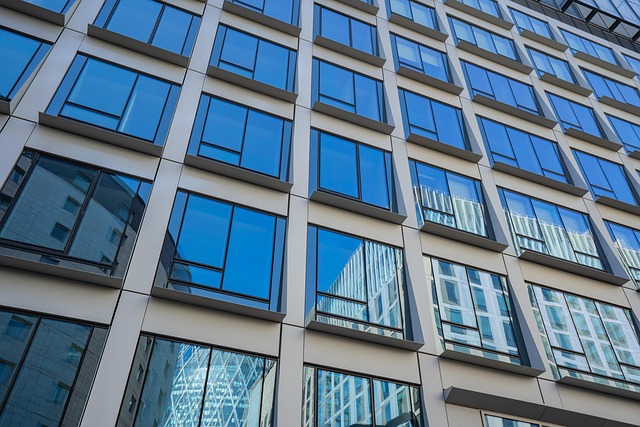Industrial air curtains are crucial for maintaining safety in explosive environments, containing particles and gases that pose severe risks. Engineered with non-combustible materials, advanced sensors, and heavy-duty construction, these curtains integrate seamlessly with HVAC systems for effective climate control. Certified by standards bodies like UL and FM Global, they withstand ignition sources and explosions through rigorous testing. When selecting industrial air curtains, consider flammable materials, potential ignition sources, and ventilation systems. These barriers protect large openings in warehouses, manufacturing facilities, and loading docks, mitigating risks of fire, smoke, heat, and dust, thereby enhancing operational efficiency.
Industrial air curtains, a game-changer in process safety, offer controlled entry and exit while containing potential hazards. Engineered for explosive environments, these dynamic solutions ensure worker protection and operational continuity. This article delves into the critical role of industrial air curtains, exploring design considerations tailored to explosive atmospheres and the paramount importance of safety certification. We’ll highlight why certified air curtains are indispensable for risk mitigation across diverse industries.
- Understanding Industrial Air Curtains: Their Role and Design Considerations for Explosive Environments
- Safety Certification in Explosive Atmospheres: Standards and Compliance for Industrial Air Curtains
- Advantages and Applications: Why Certified Industrial Air Curtains are Essential for Risk Mitigation
Understanding Industrial Air Curtains: Their Role and Design Considerations for Explosive Environments

Industrial air curtains play a pivotal role in maintaining safety and operational efficiency in environments where explosives are present or handled. These specialized barriers are designed to control and contain airborne particles, gases, and vapours that could pose a severe risk in industrial settings. By acting as a robust barrier, they prevent the spread of flammable materials, ensuring worker safety and the integrity of sensitive operations.
When engineering air curtains for explosive environments, several key design considerations come into play. These include using non-combustible materials, ensuring proper ventilation to avoid build-up of hazardous gases, and incorporating advanced sensors and control systems for real-time monitoring. Heavy-duty construction is essential to withstand the demanding conditions encountered in warehouses, manufacturing facilities, and loading docks. Integrating these air curtains into existing industrial HVAC (heating, ventilation, and air conditioning) systems allows for effective climate control while providing robust protection at large openings, such as factory entrances or cold storage areas.
Safety Certification in Explosive Atmospheres: Standards and Compliance for Industrial Air Curtains

In explosive environments, safety certification for industrial components like air curtains is paramount to prevent catastrophic failures and protect workers. Organizations such as UL (Underwriters Laboratories), FM Global (Factory Mutual), and others establish stringent standards ensuring these products can withstand potential ignition sources and contain explosions. For industrial air curtains, this includes rigorous testing for spark suppression, deflagration resistance, and flame spread prevention. Compliance with standards like UL 1504 or FM 4910 guarantees that the air curtain not only prevents the entry of hazardous gases but also minimizes the risk of fire propagation in case of an incident.
When selecting industrial air curtains for explosive atmospheres, it’s crucial to consider specific requirements such as the presence of flammable materials, potential ignition sources, and ventilation systems. Heavy-duty air barriers designed for large openings in factories, warehouses, and loading docks must incorporate advanced safety features like integrated spark suppression systems and durable construction to withstand harsh conditions. These industrial HVAC (heating, ventilation, and air conditioning) systems serve as critical components in maintaining a safe environment, ensuring compliance with relevant regulations, and facilitating efficient manufacturing door systems or cold storage barriers.
Advantages and Applications: Why Certified Industrial Air Curtains are Essential for Risk Mitigation

Industrial air curtains, with their safety certification, offer significant advantages in risk mitigation for explosive environments. These certified heavy-duty air curtains act as robust industrial air barriers, effectively containing and controlling the movement of potentially hazardous materials or gases. By sealing off warehouse entrance protection, manufacturing door systems, and large openings, they prevent the spread of explosions or leaks, ensuring the safety of personnel and equipment in nearby areas.
Their application is vast, particularly in manufacturing facilities, factories with loading docks, cold storage warehouses, and other industrial settings that require climate control and HVAC systems. The air curtains serve as a dynamic solution for maintaining a safe environment by providing a barrier against flammable or explosive substances, heat, smoke, and dust, thereby enhancing overall operational efficiency.
Industrial air curtains, designed with explosive environments in mind, offer a robust solution for enhancing safety and mitigating risks. With the right safety certification, these curtains become essential tools for industries dealing with potentially hazardous atmospheres. By adhering to stringent standards, certified industrial air curtains provide peace of mind, ensuring the well-being of workers and the prevention of costly accidents. This innovative technology is a game-changer in fostering a safer work environment, especially in sectors where explosive materials are handled regularly.






